Most American Citizens Get These Great Depression Questions Wrong
The Great Depression is known as one of the most challenging times in all of US history. From the stock market crash to rising unemployment, the American economy was in complete turmoil for years.
Many learned a little about the Great Depression in school, but the vast majority of Americans won’t be able to answer these tough and detailed questions.
1. The Great Depression lasted from…
- A) 1907-1920
- B) 1920-1930
- C) 1929-1939
- D) 1930-1945
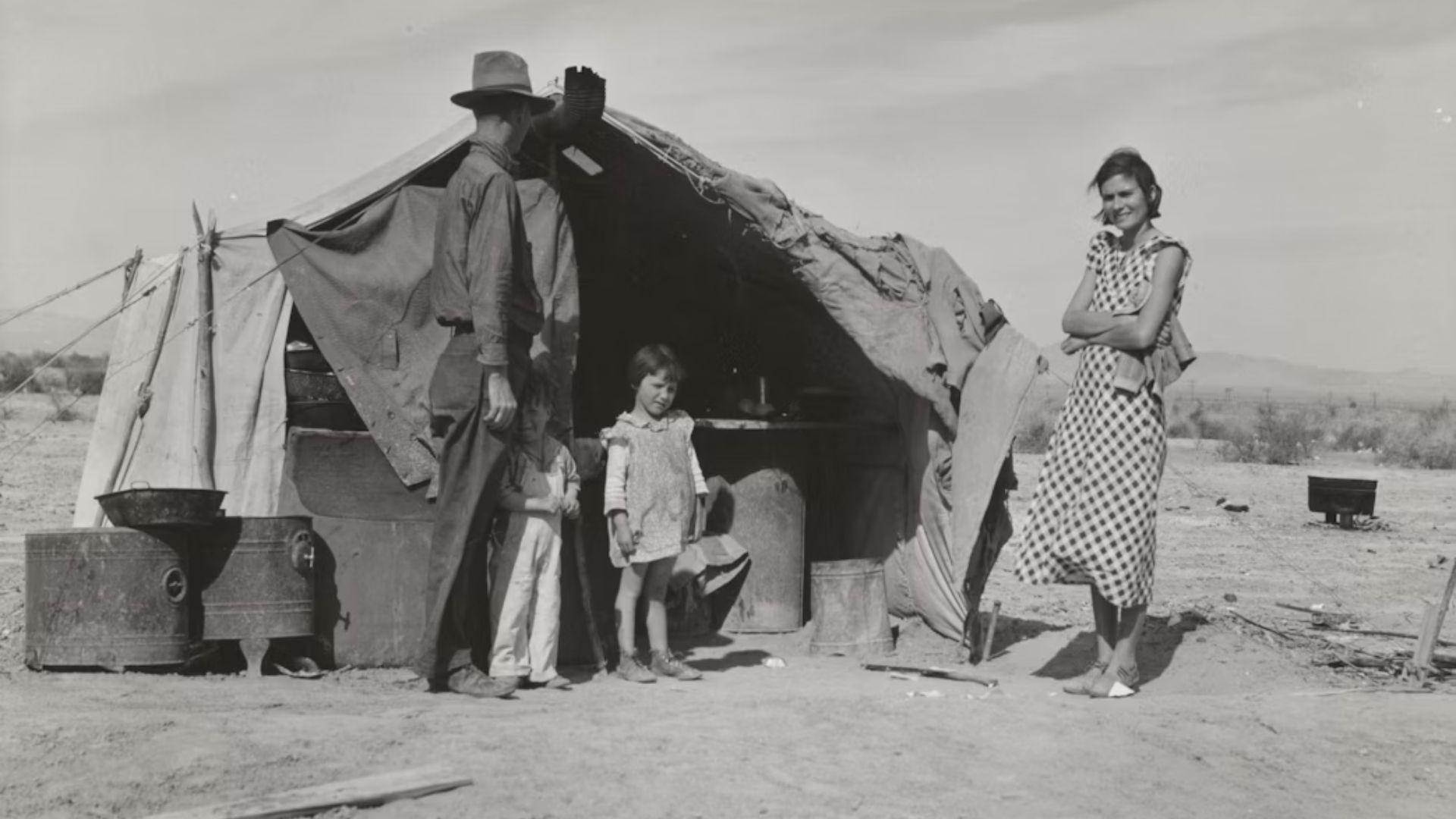
Source: The New York Public Library/Unsplash
Answer:
1929-1939
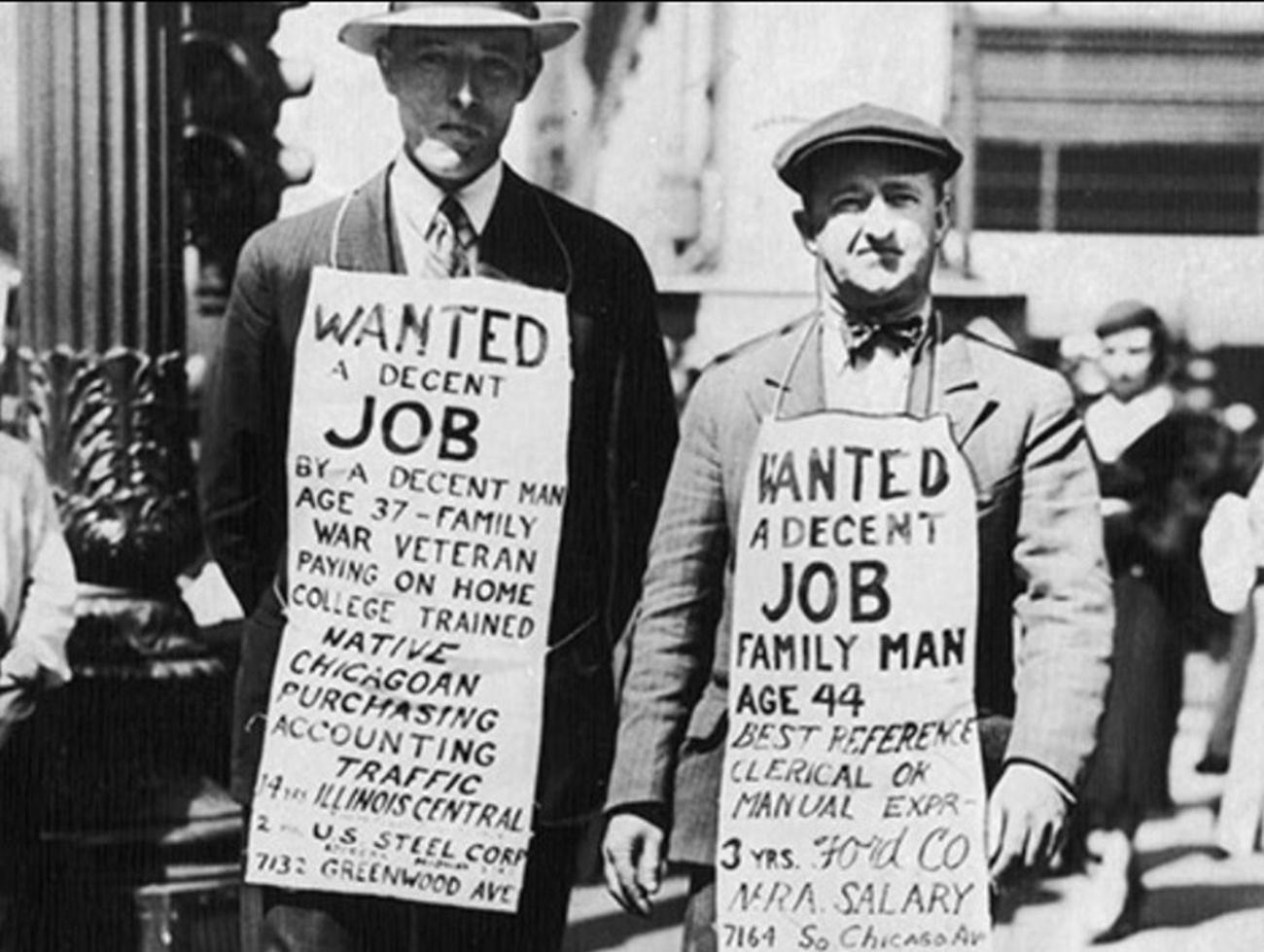
Source: Linkedin
2. The day the market crashed, October 24, 1929, is known by which nickname?
- A) Black Friday
- B) Black Thursday
- C) The Day of Depression
- D) The Great Crash
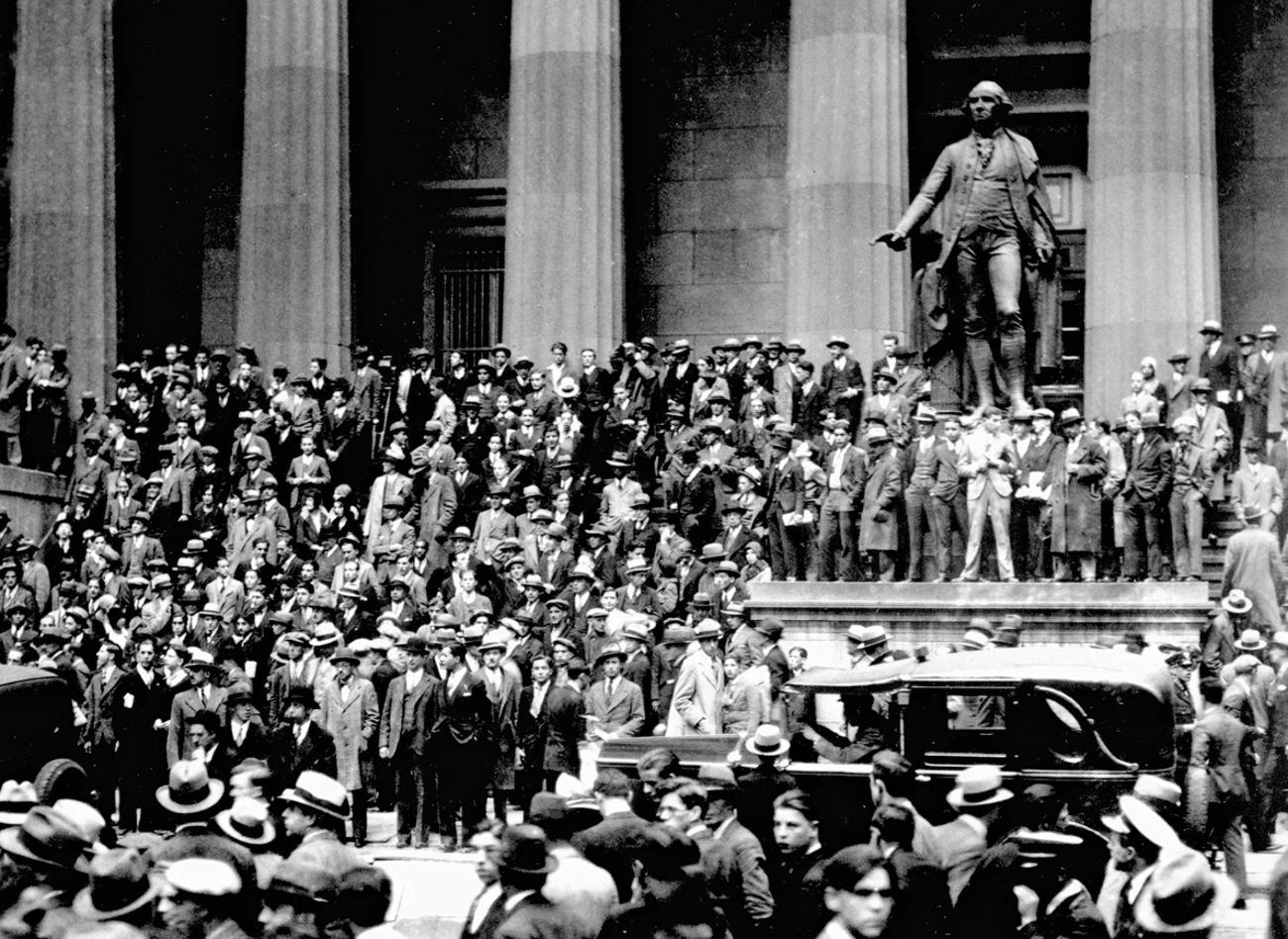
Source: Britannica
Answer:
Black Thursday
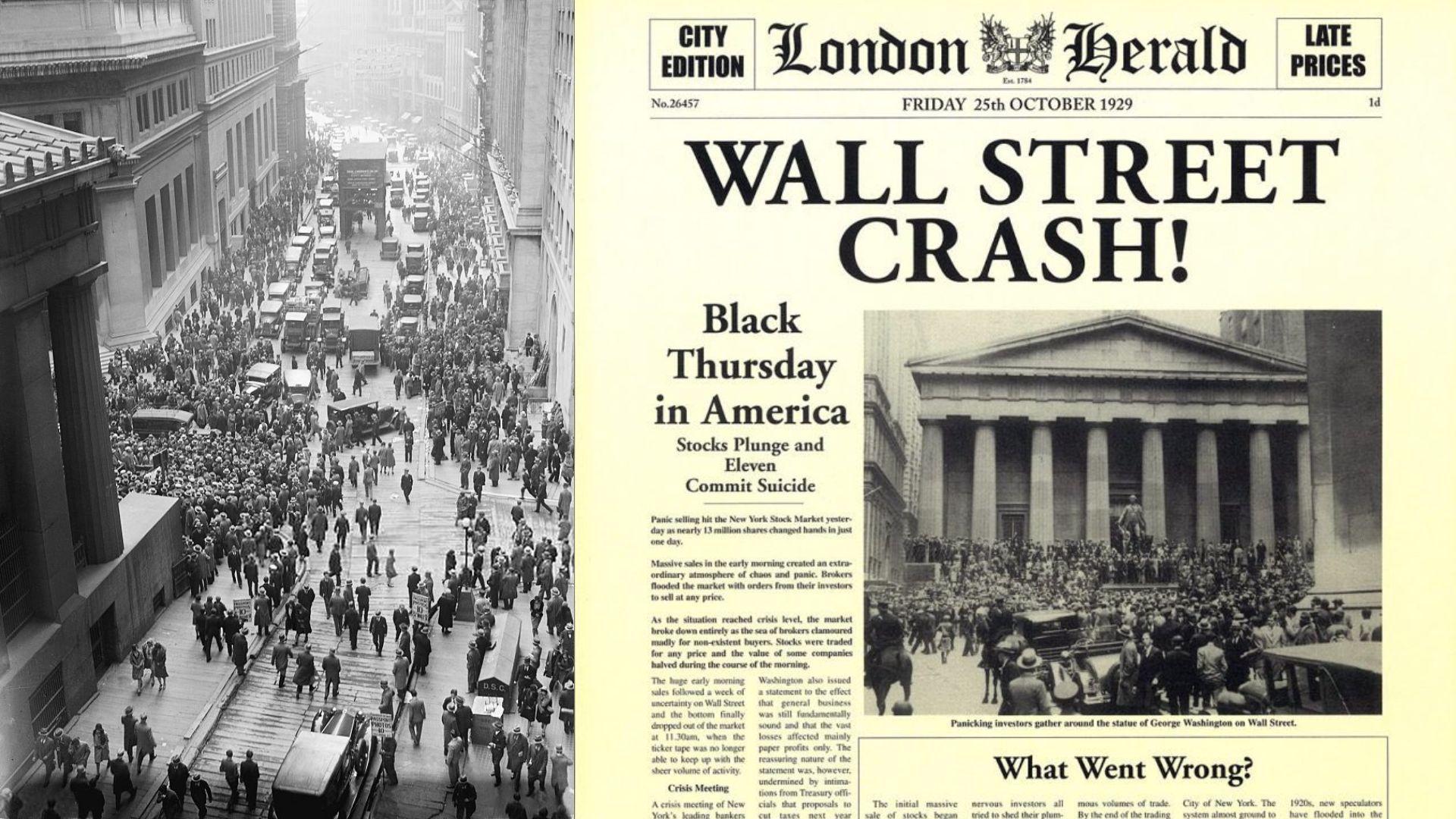
Source: Wikipedia/@paradoxinvestor/X
3. At the height of the Great Depression, the nation’s unemployment rate was…
- A) 17%
- B) 25%
- C) 31%
- D) 33%
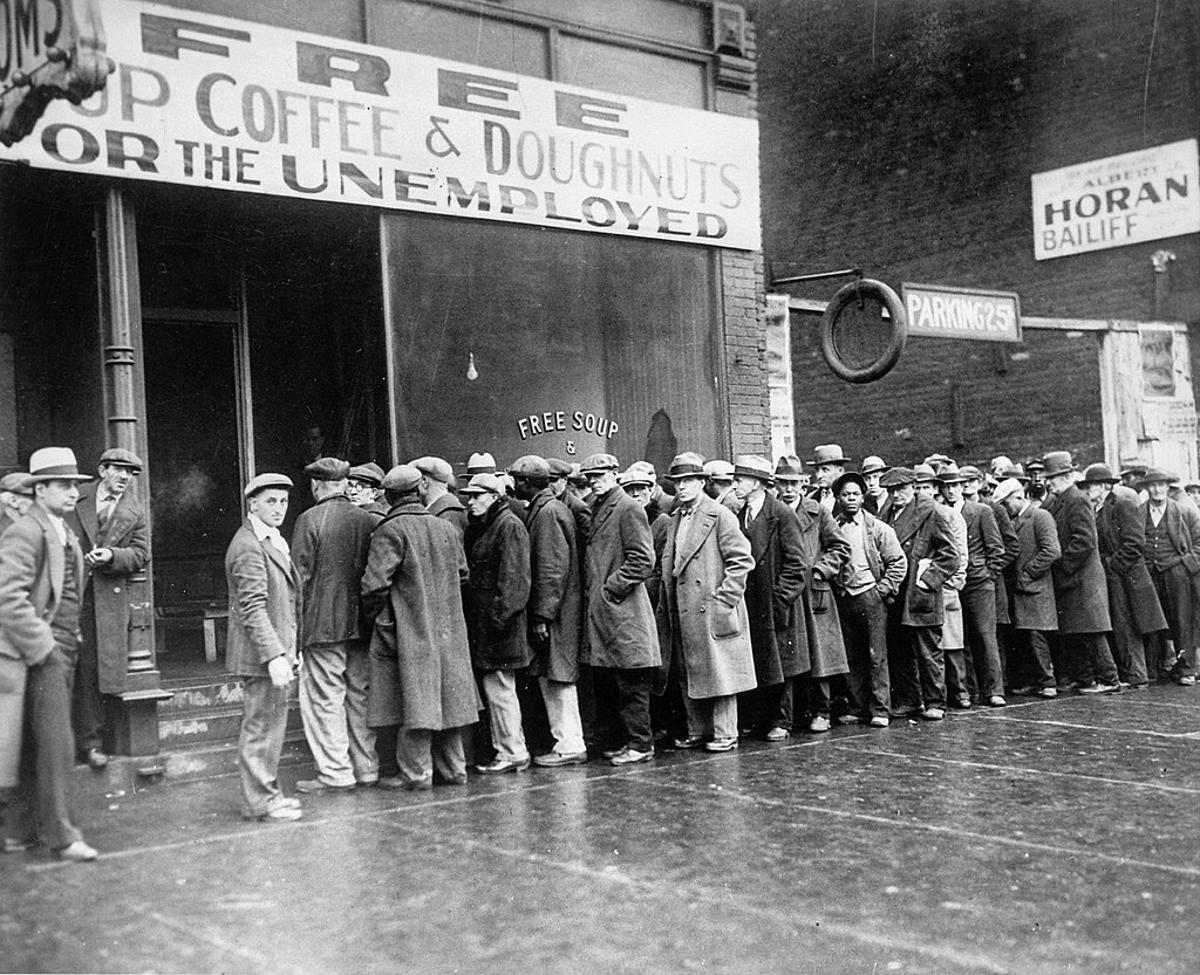
Source: Wikipedia
Answer:
25%

Source: PBuySites
4. What was the risky investing practice that led to the stock market crash of 1929?
- A) Investors had been leveraging their investments through the use of option contracts
- B) Investors had been buying stocks on margin rather than paying for stock purchases in full
- C) Businesses mistakenly assumed that American consumers would be willing to purchase big-ticket items like appliances and automobiles throughout the 1920s
- D) International companies were buying up all of the stock in American companies
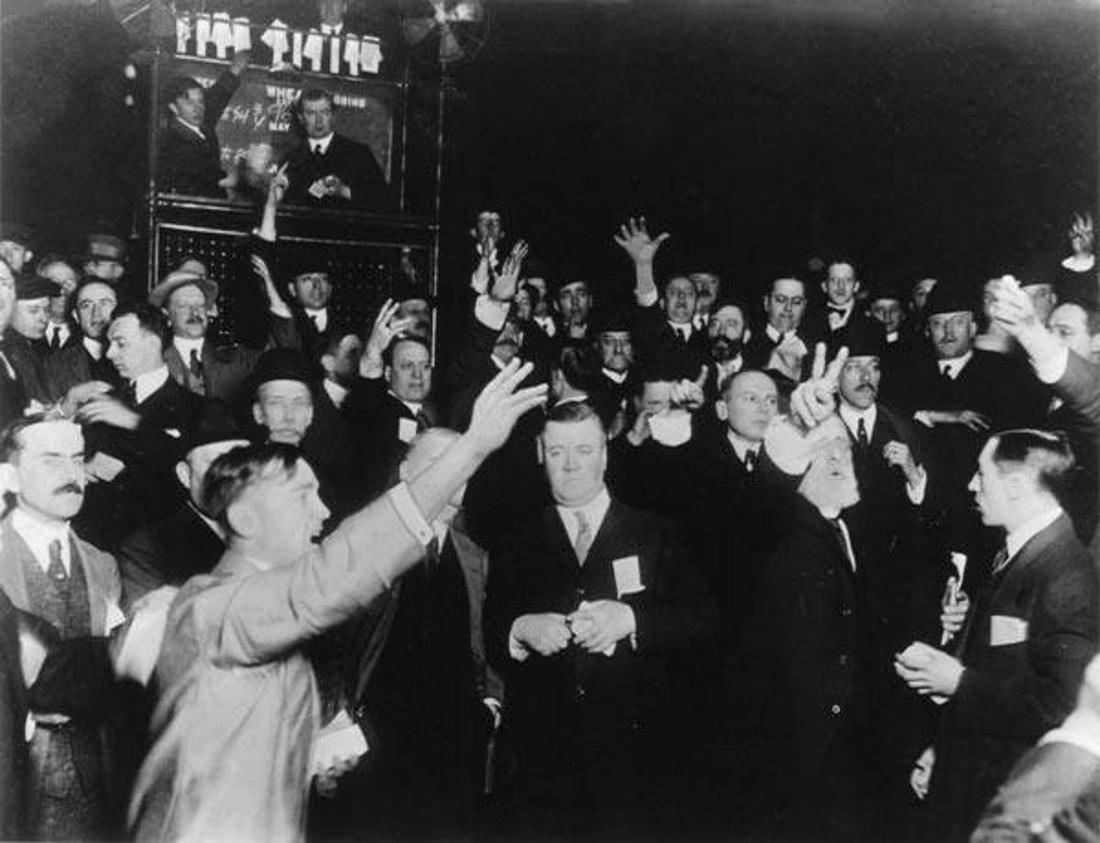
Source: @Sechisortical/Facebook
Answer:
Investors had been buying stocks on margin rather than paying for stock purchases in full
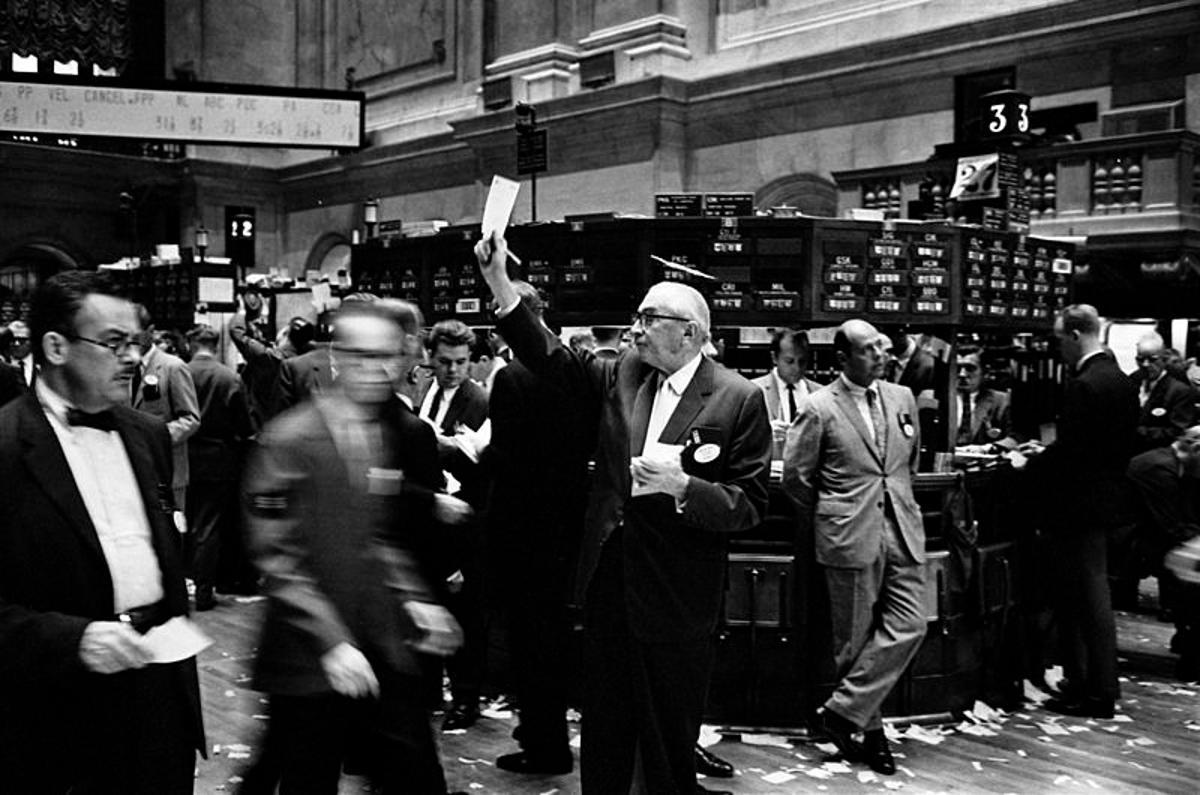
Source: Wikipedia
5. Which of the following caused the extreme drop in employment in the USA during the late 1920s and early 1930s?
- A) Increased international imports
- B) A lack of skilled laborers
- C) Factories were forced to layoff large numbers due to lack of sales
- D) None of the Above

Source: Wikipedia
Answer:
Factories were forced to layoff large numbers due to lack of sales

Source: Freepik
6. Herbert Hoover was the President at the start of the Great Depression. Who was President at the end?
- A) Franklin D. Roosevelt
- B) Harry Truman
- C) Herbert Hoover
- D) Dwight D. Eisenhower
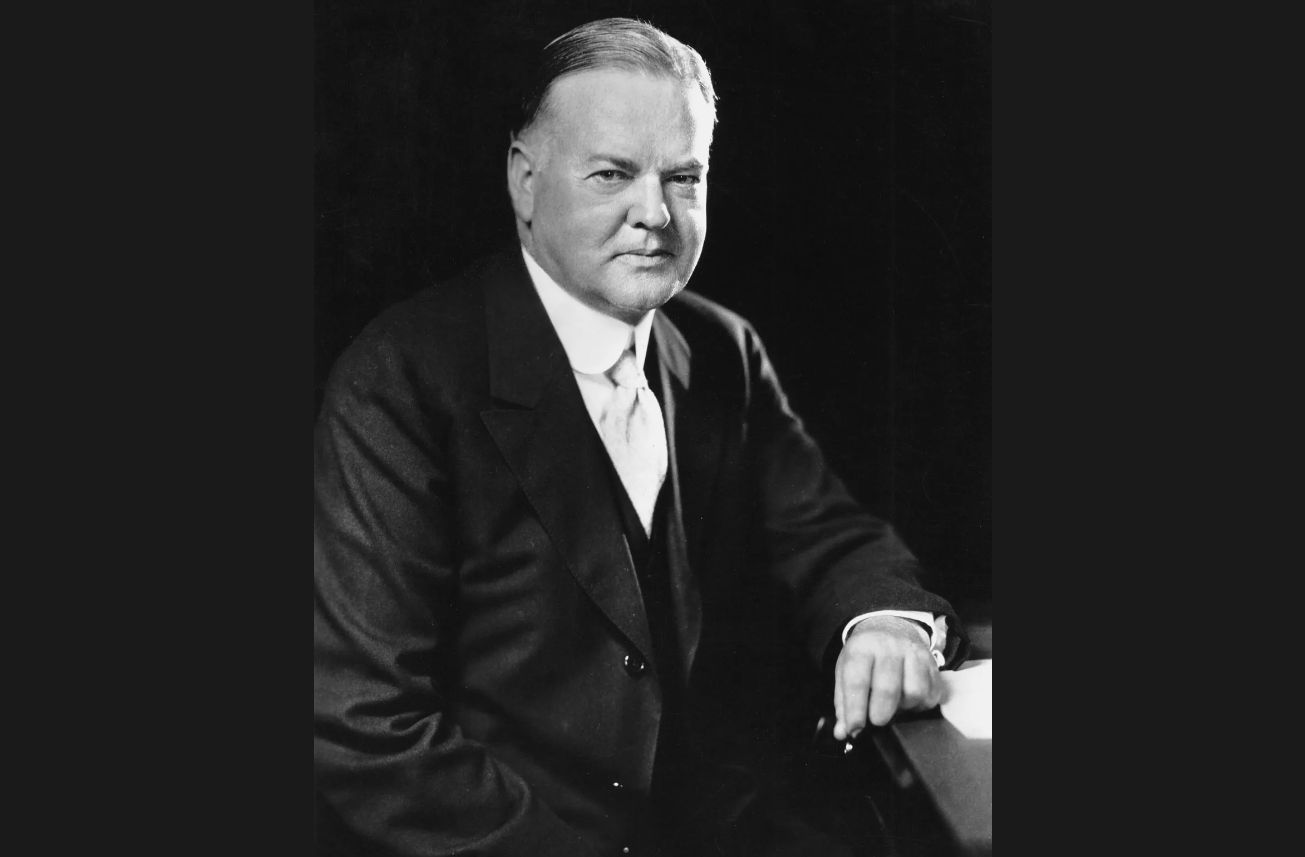
Source: Britannica
Answer:
Franklin D. Roosevelt
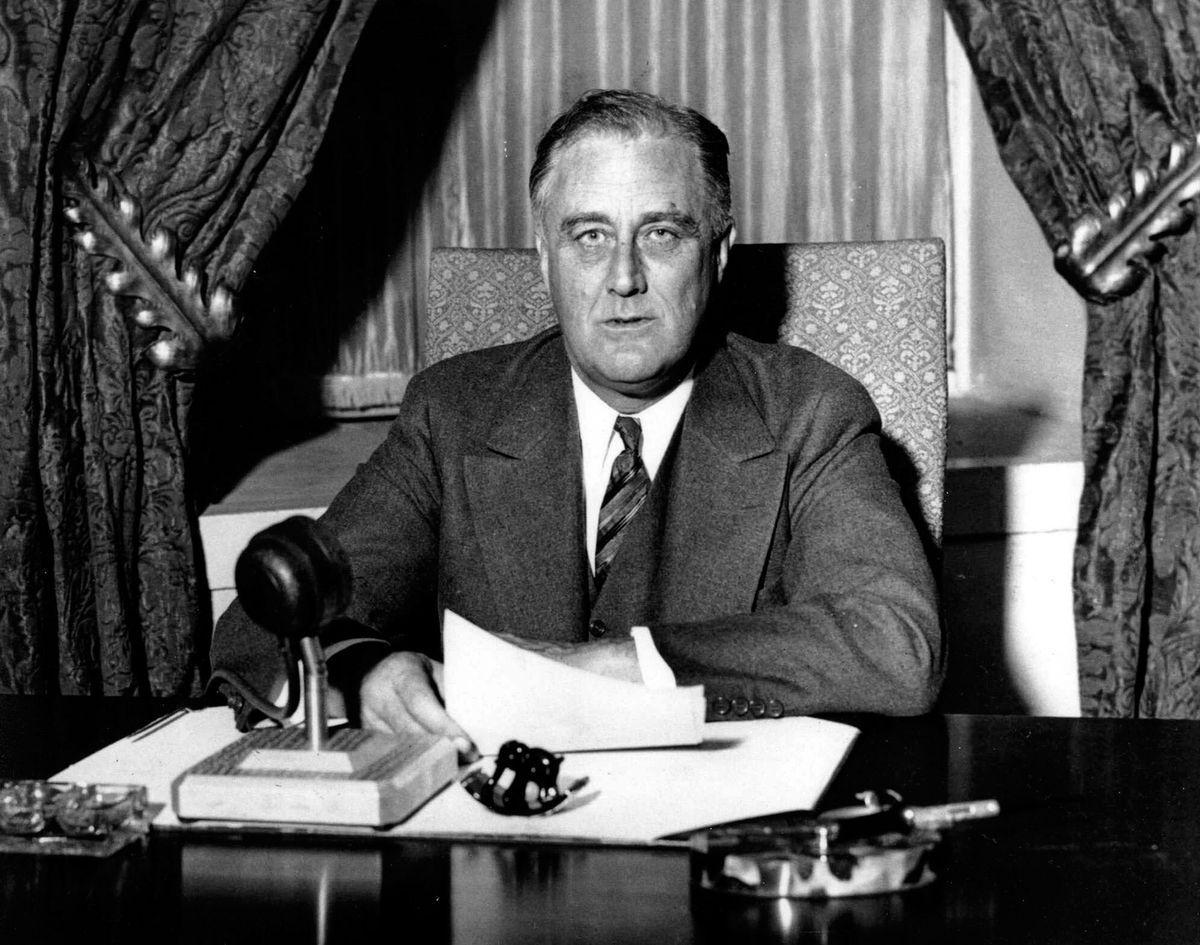
Source: Alamy
7. What were the shantytowns, homes made of packing crates, abandoned cars, and building scraps, of the Great Depression called?
- A) Shantyvilles
- B) America’s Slums
- C) Hoovervilles
- D) None of the Above
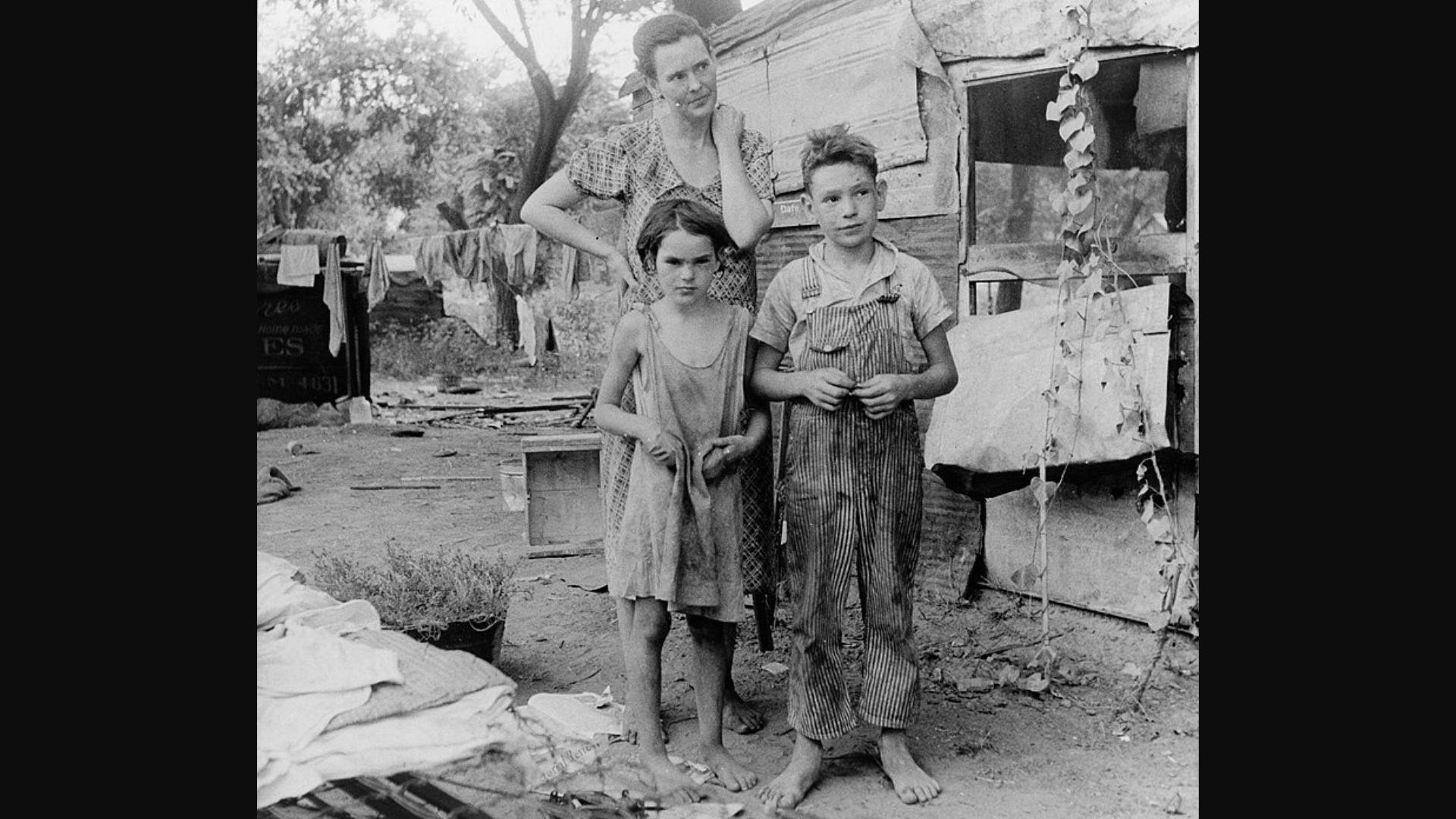
Source: Wikipedia
Answer:
Hoovervilles
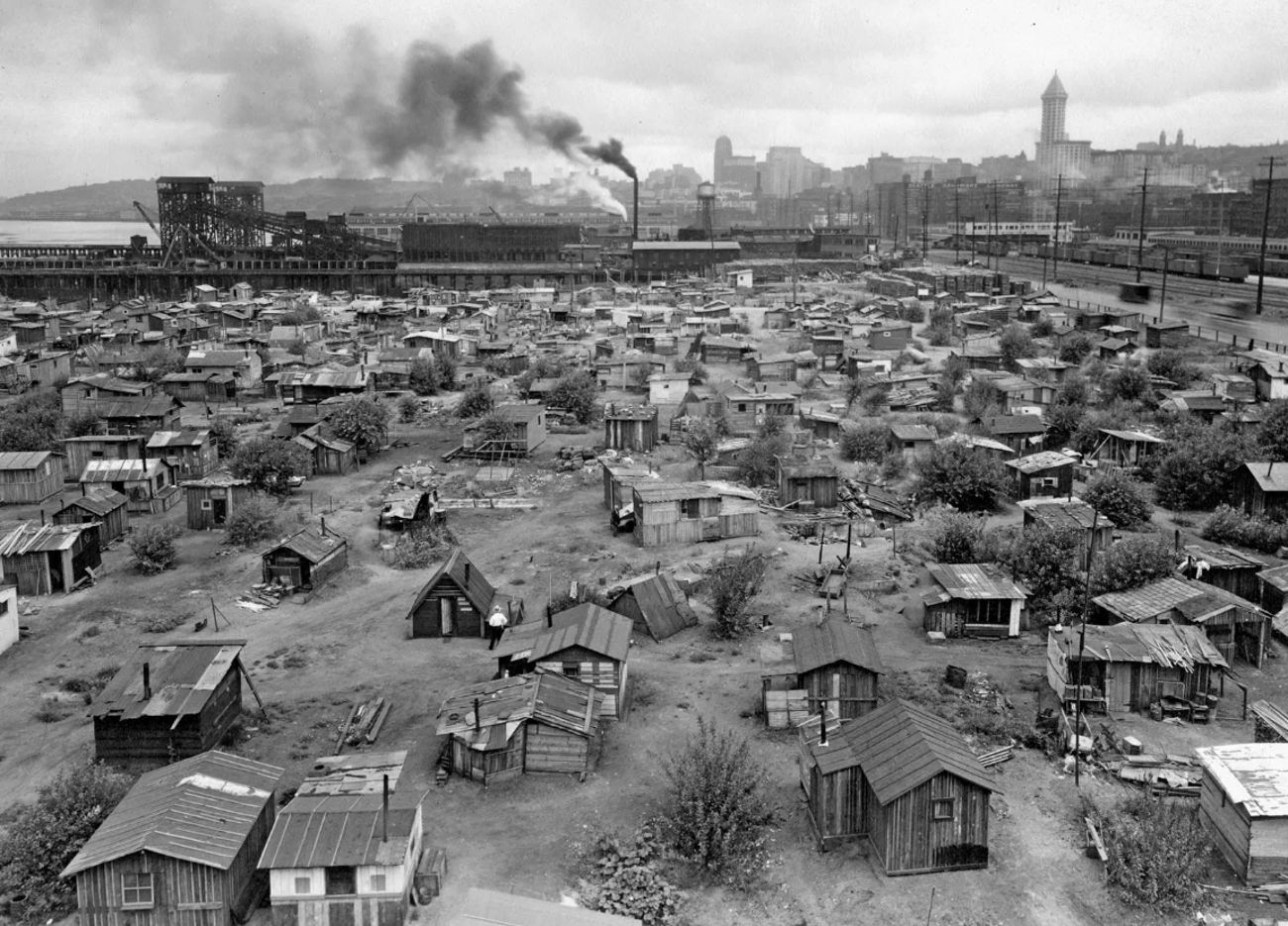
Source: Britannica
8. What effect did the Great Depression have on international trade?
- A) It increased the demand for foreign goods
- B) It had no real impact on international trade
- C) It led to new international trade partnerships
- D) It caused international trade to decline significantly
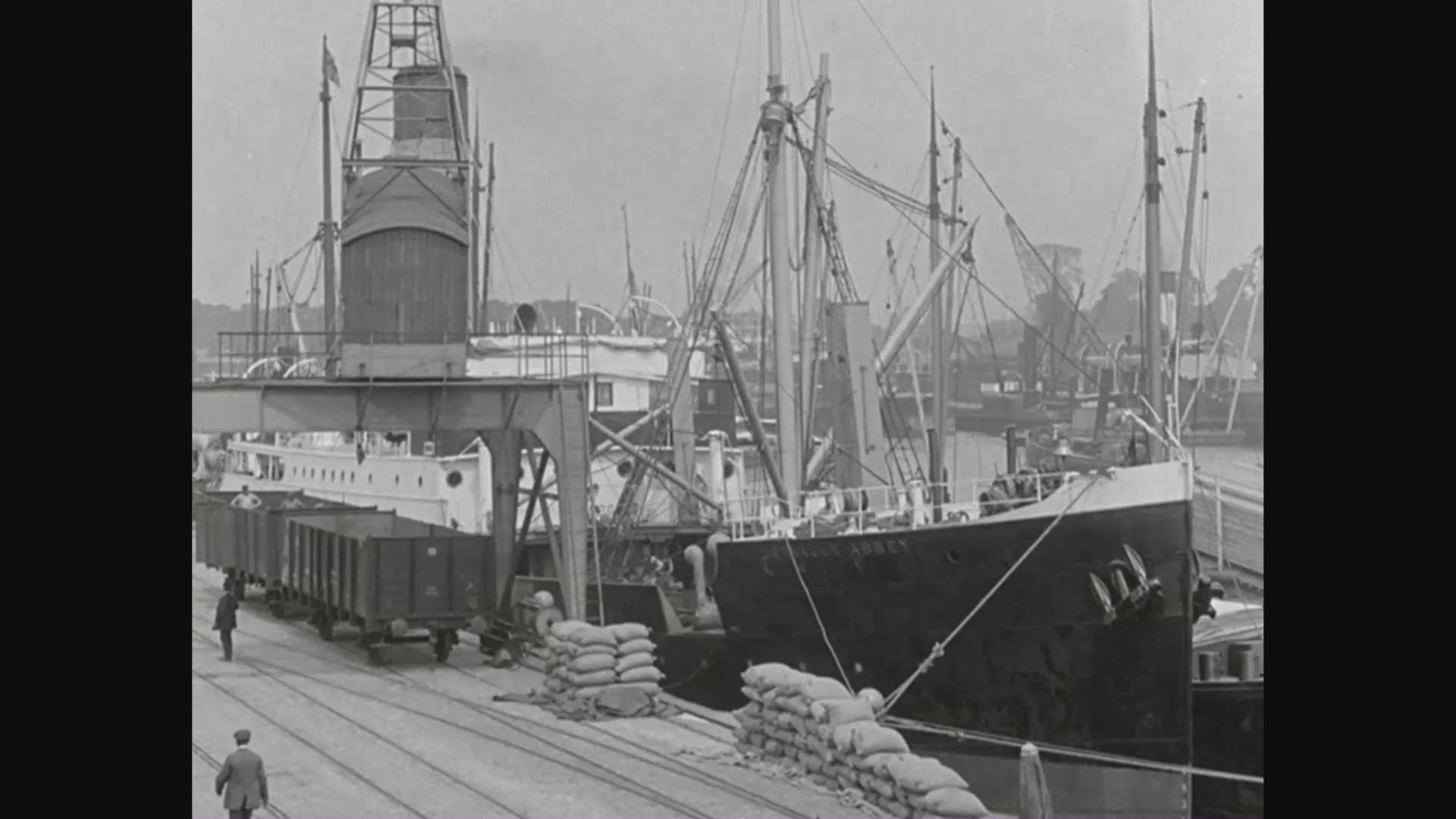
Source: Pond5
Answer:
It caused international trade to decline significantly
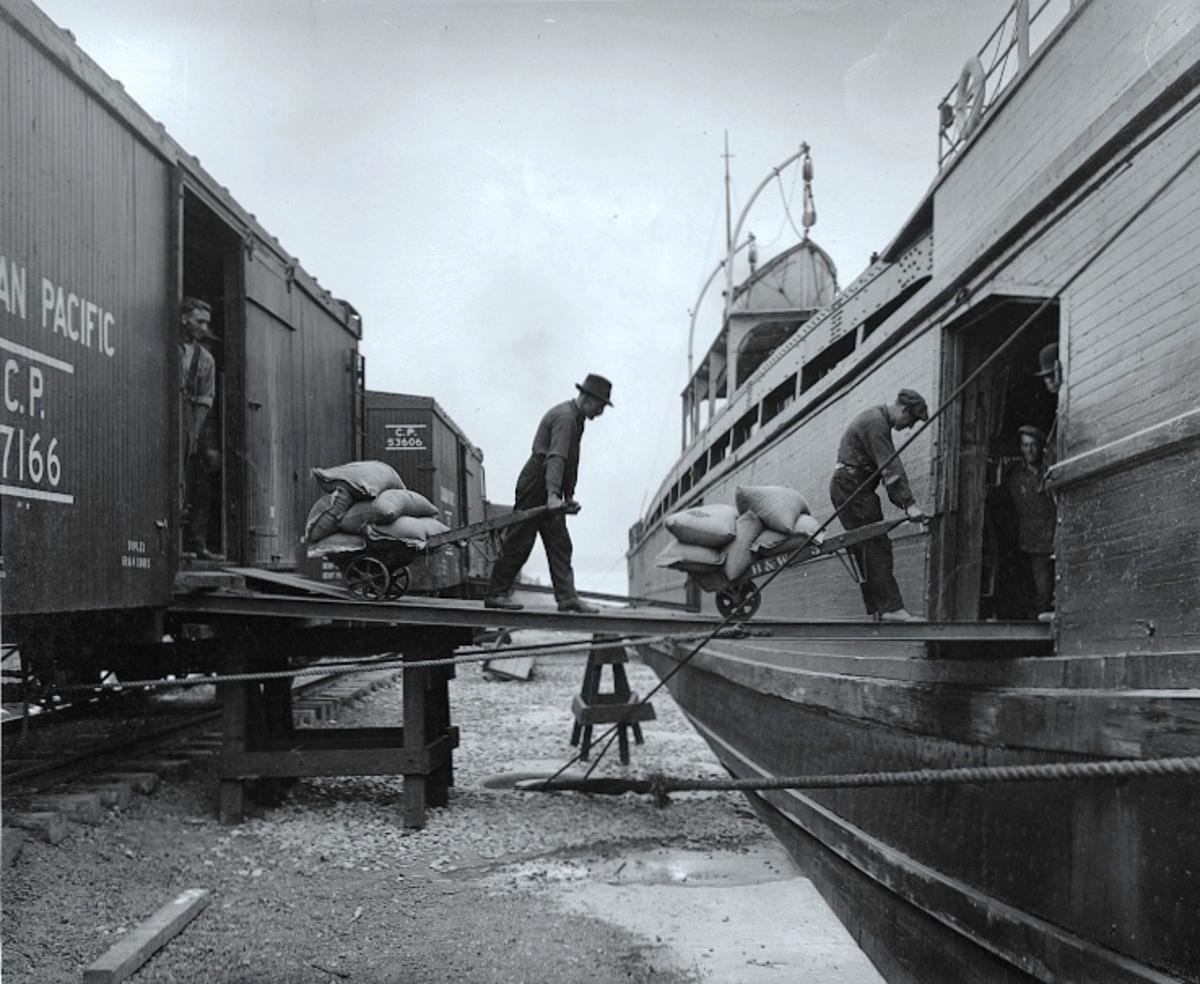
Source: Wikipedia
9. Which famous novel written by John Steinbeck was based on the Great Depression?
- A) The Sun Also Rises
- B) Cannery Row
- C) East of Eden
- D) The Grapes of Wrath
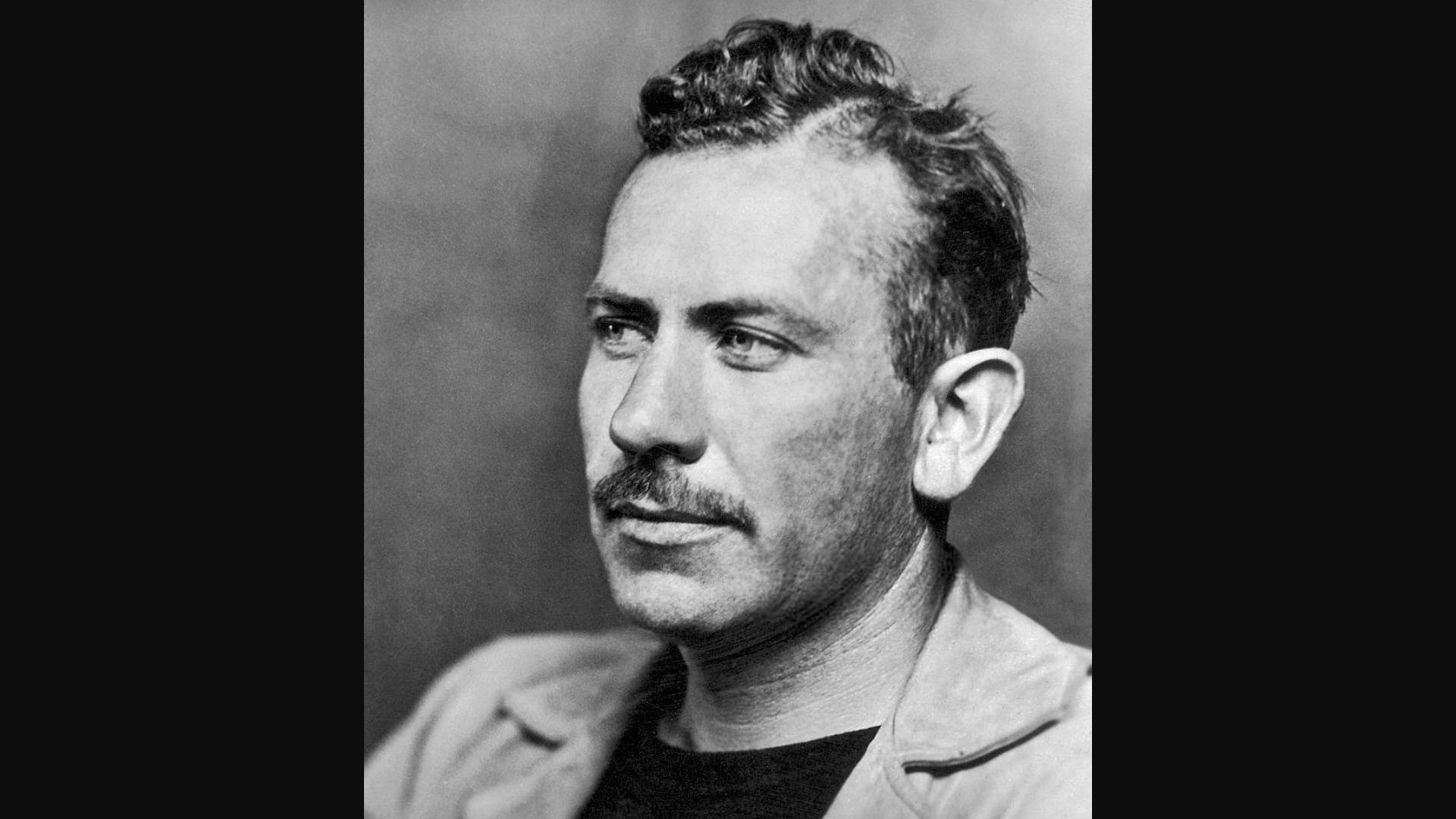
Source: Wikipedia
Answer:
The Grapes of Wrath
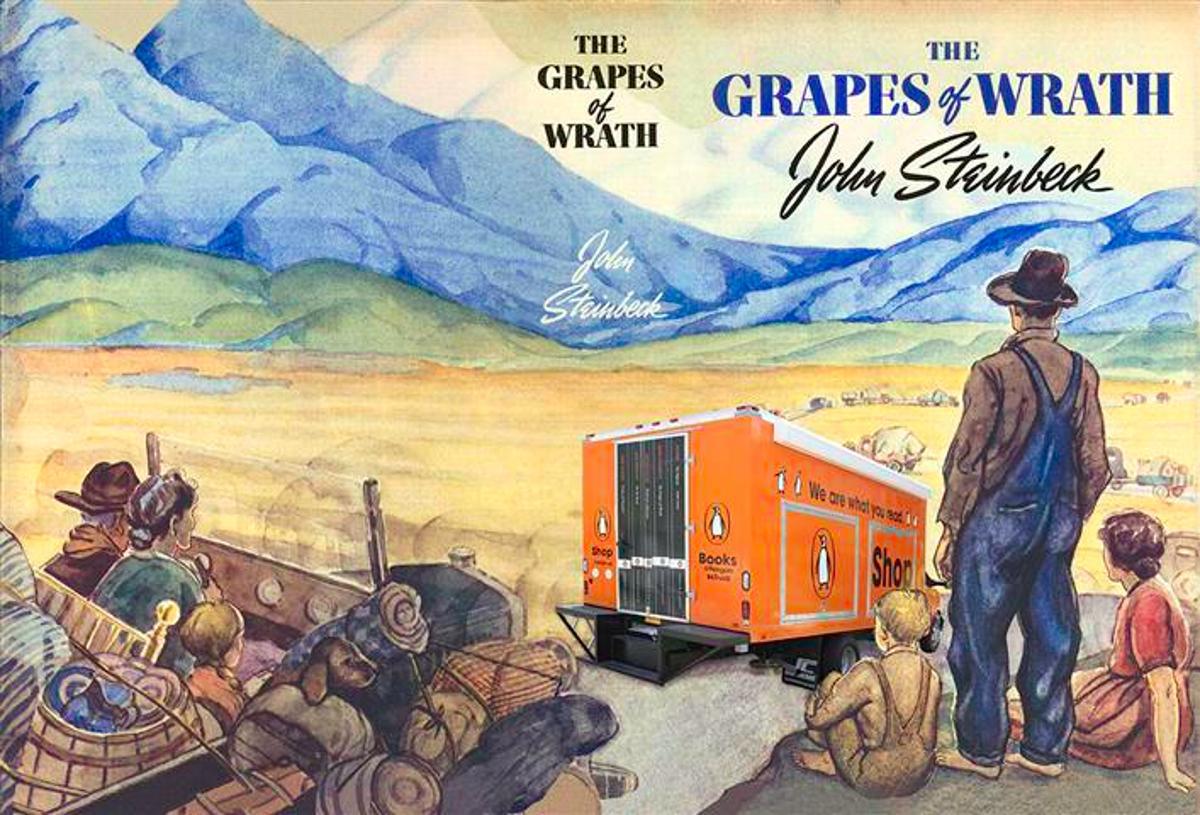
Source: Wikipedia
10. In what year did the US government pass the Social Security Act?
- A) 1929
- B) 1935
- C) 1939
- D) 1945
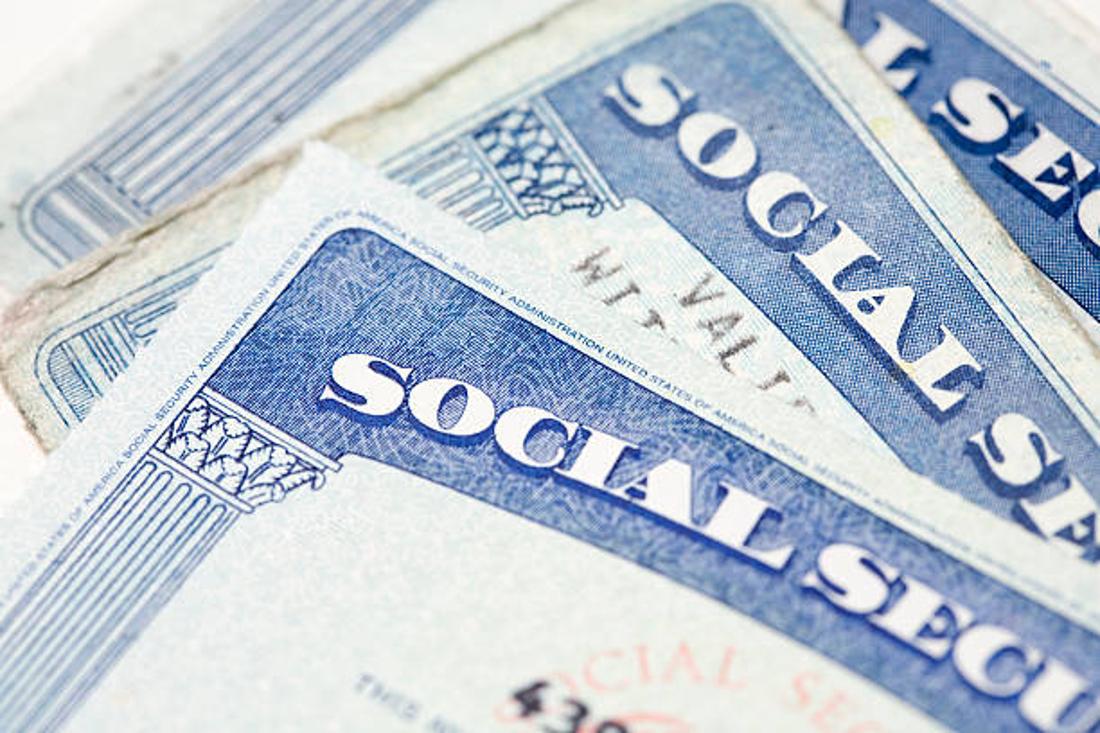
Source: iStock
Answer:
1935
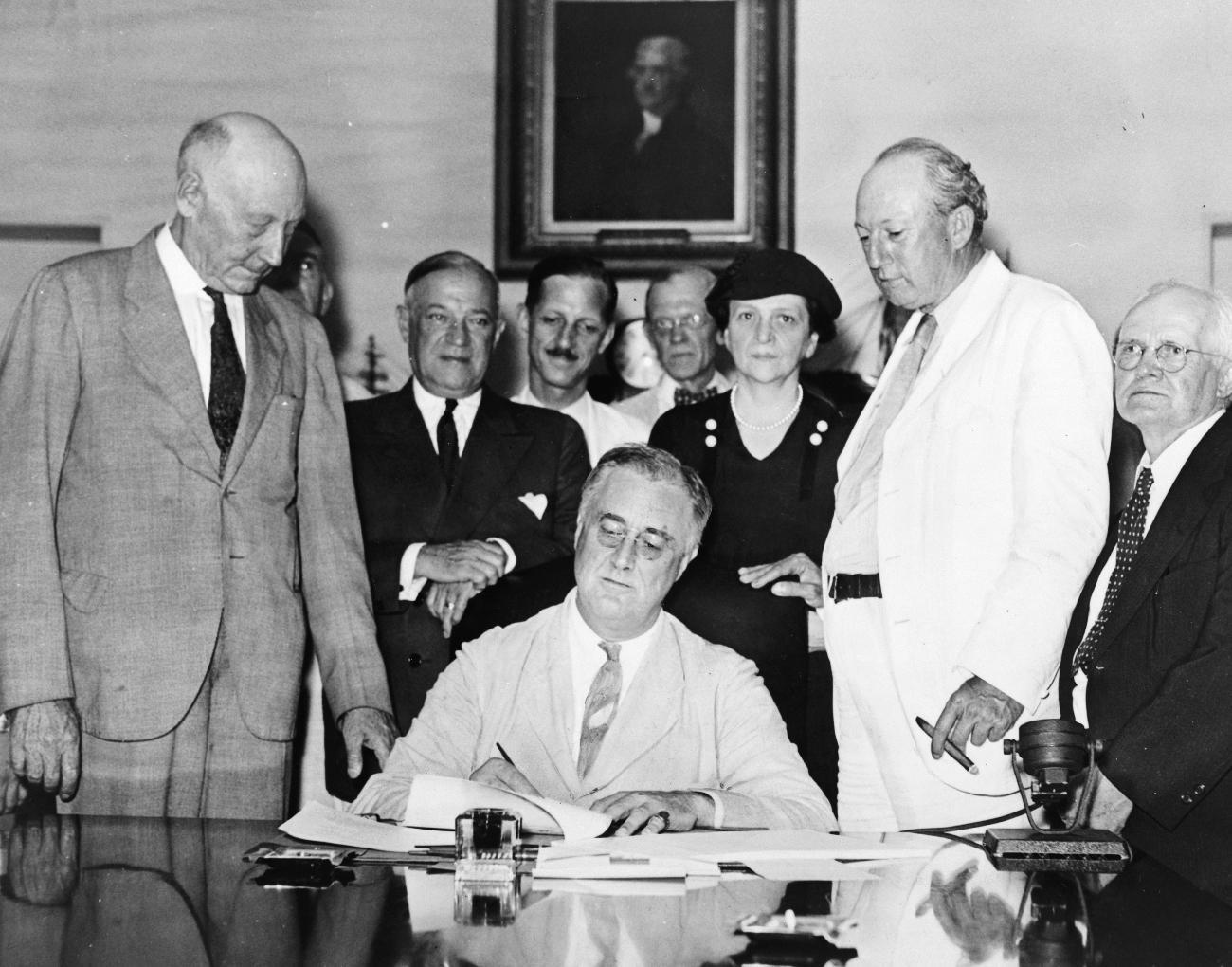
Source: Wikipedia
11. What did the Revenue Act of 1935 put in place?
- A) The Internal Revenue Service
- B) A mandatory minimum wage for all American workers
- C) A public registry of all money earned by American workers
- D) An increased tax rate on large corporations and high-income Americans

Source: @_waleedshahid/X
Answer:
An increased tax rate on large corporations and high-income Americans
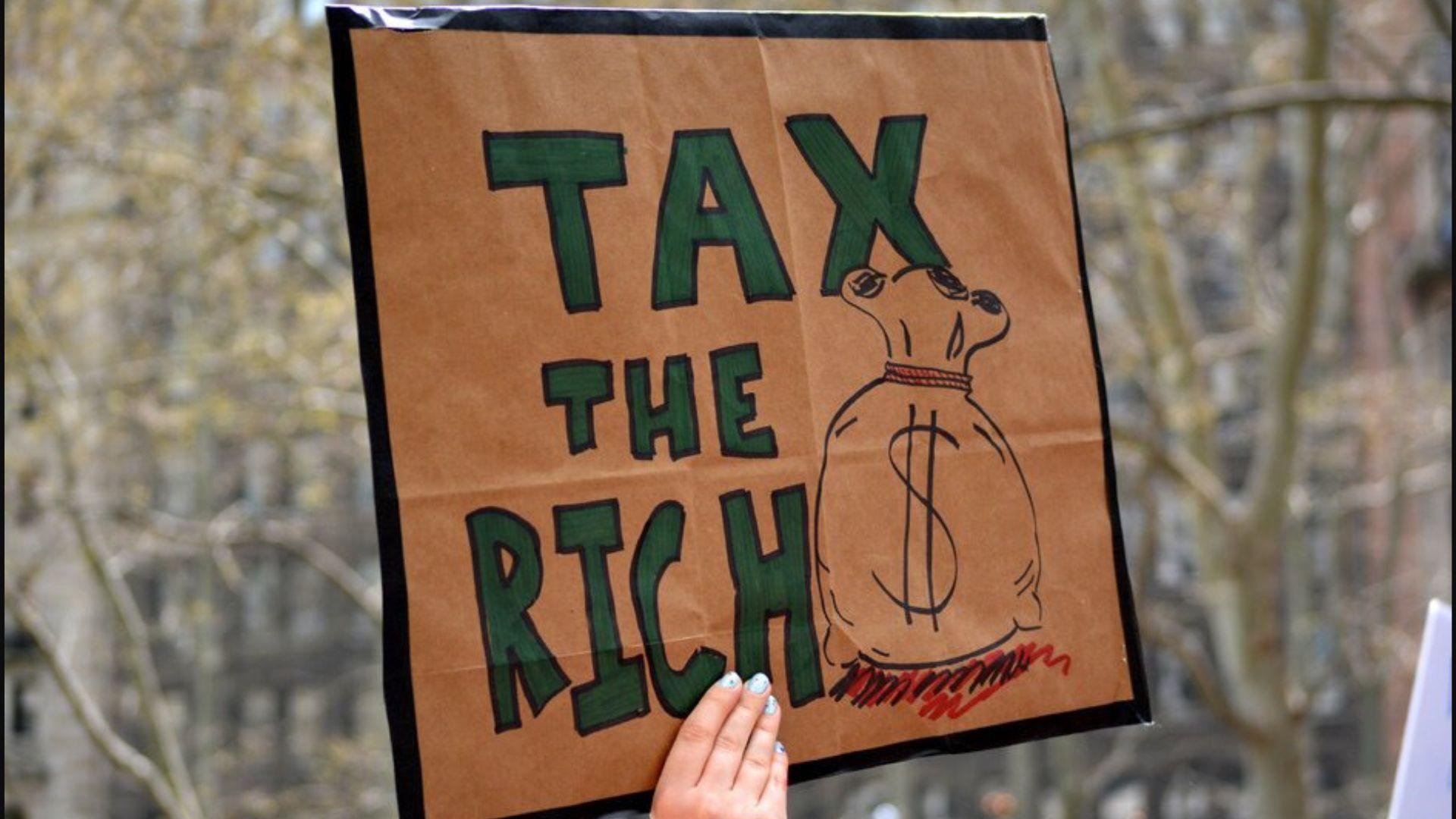
Source: Shutterstock
12. What was Franklin D. Roosevelt’s “Brain Trust”?
- A) The Brain Trust was a group of the president’s close advisors, from politicians to academics, who helped him think of creative ways to end the Great Depression
- B) The Brain Trust was Roosevelt’s plan to override Congress and make immediate changes in the economy
- C) The Brain Trust was the president’s hidden cabinet of advisors, made up of his two sons, his brother, and his father
- D) None of the Above
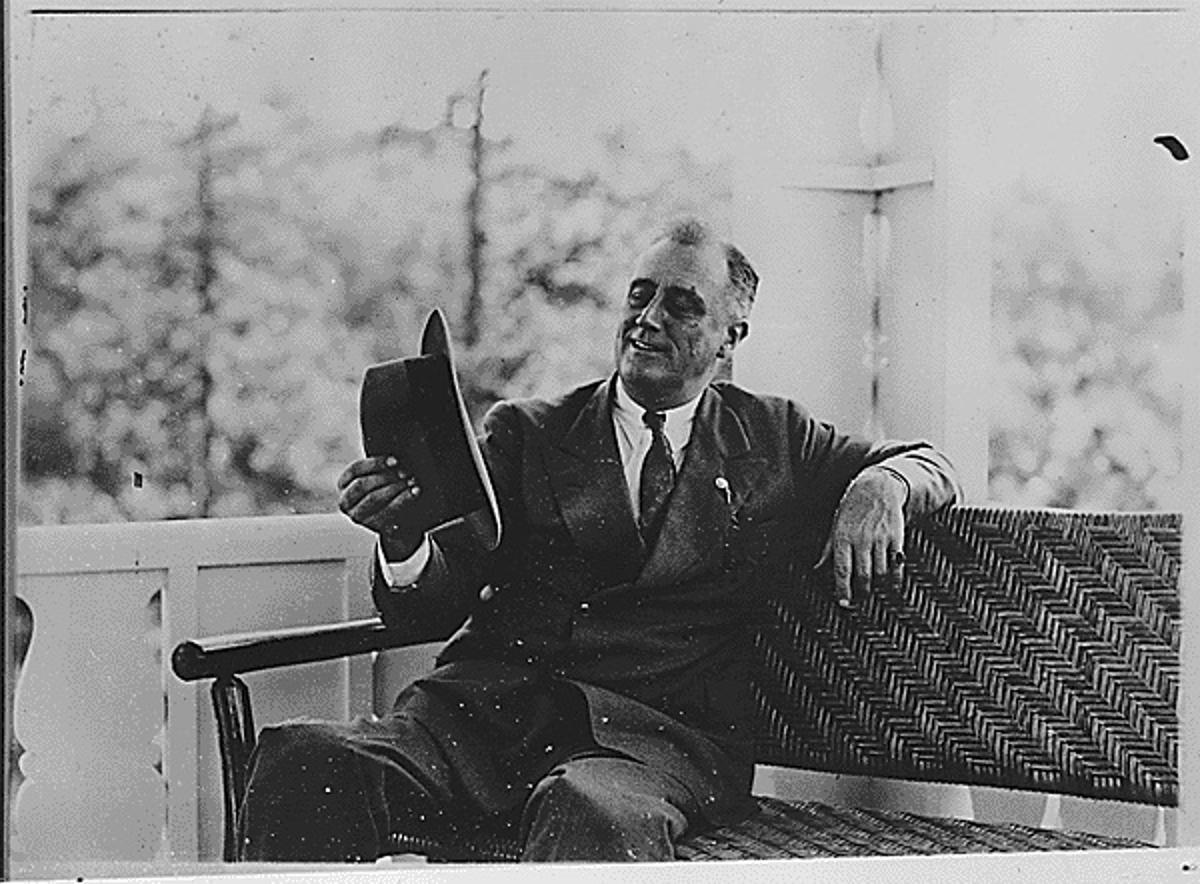
Source: National Archives and Records Administration
Answer:
The Brain Trust was a group of the president’s close advisors, from politicians to academics, who helped him think of creative ways to end the Great Depression
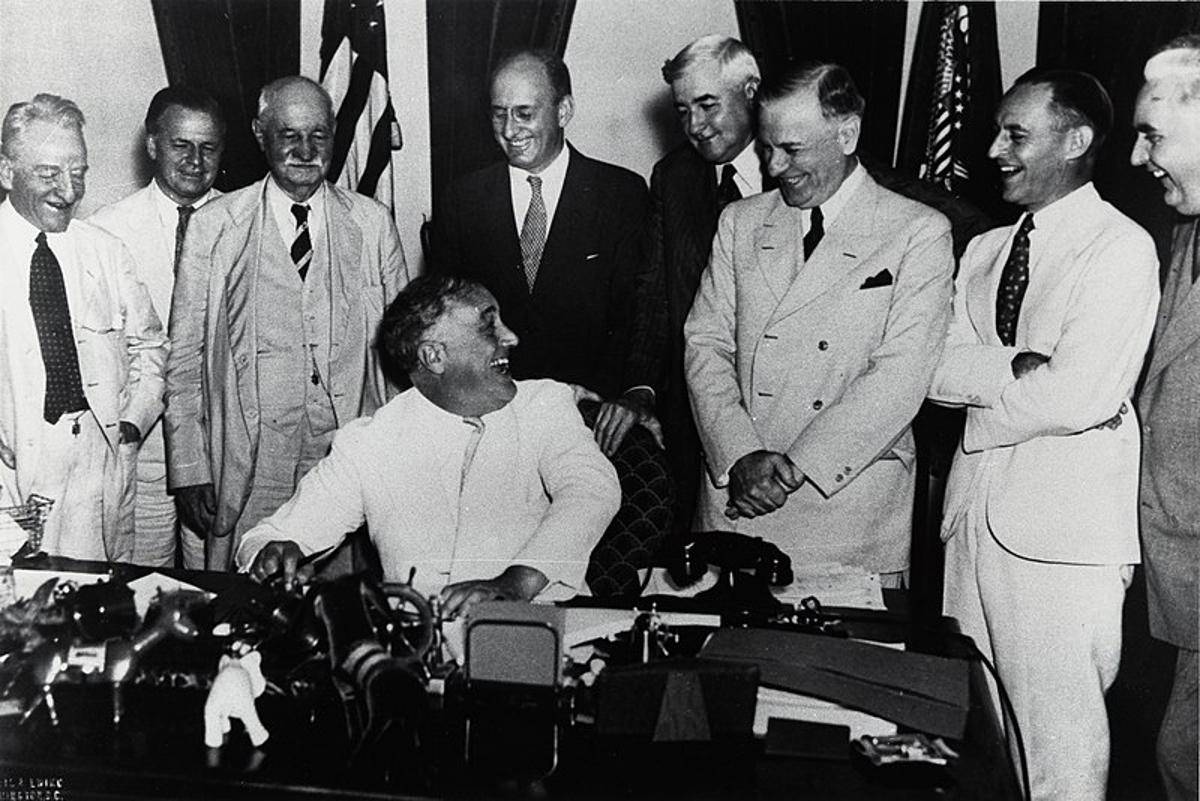
Source: Wikipedia
13. What was the impact of the Dust Bowl on American agriculture?
- A) Word of the Dust Bowl brought thousands of Americans to the southern Great Plains with hopes of cashing in on the abundant farmland
- B) The Dust Bowl enticed thousands of women to become farmers in the southern Great Plains
- C) The Dust Bowl led to a boom of African American farm ownership in the southern Great Plains
- D) The Dust Bowl led to the mass exodus of nearly half a million farmers from the southern Great Plains due to the lack of farmable soil
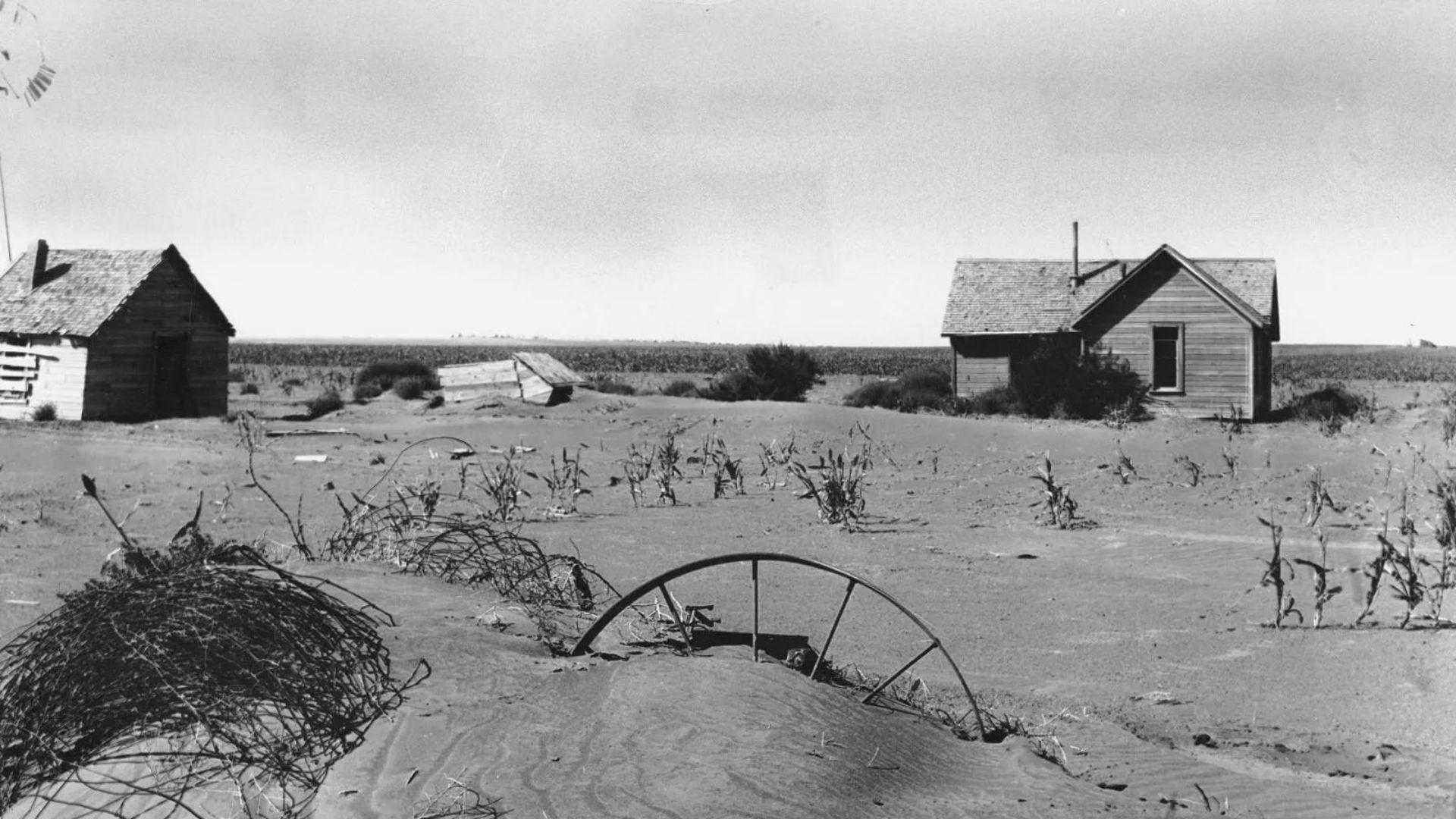
Source: Britannica
Answer:
The Dust Bowl led to the mass exodus of nearly half a million farmers from the southern Great Plains due to the lack of farmable soil
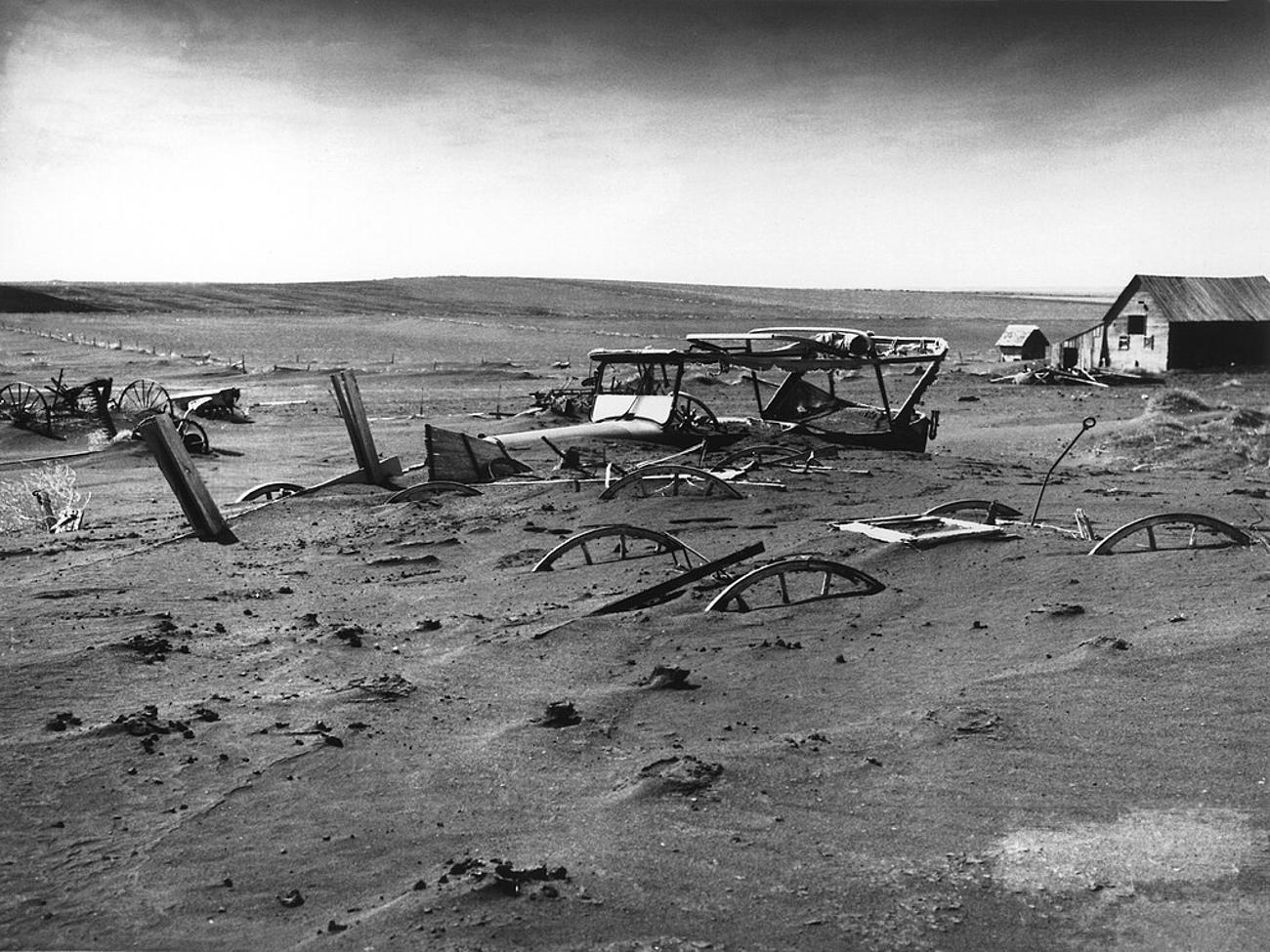
Source: Wikipedia
14. Which of the following was NOT a program that put Americans to work improving America's infrastructure and public buildings?
- A) Work Progress Administration
- B) Civilian Conservation Corps
- C) Public Works Administration
- D) The American Employment Authority

Source: Flickr
Answer:
The American Employment Authority
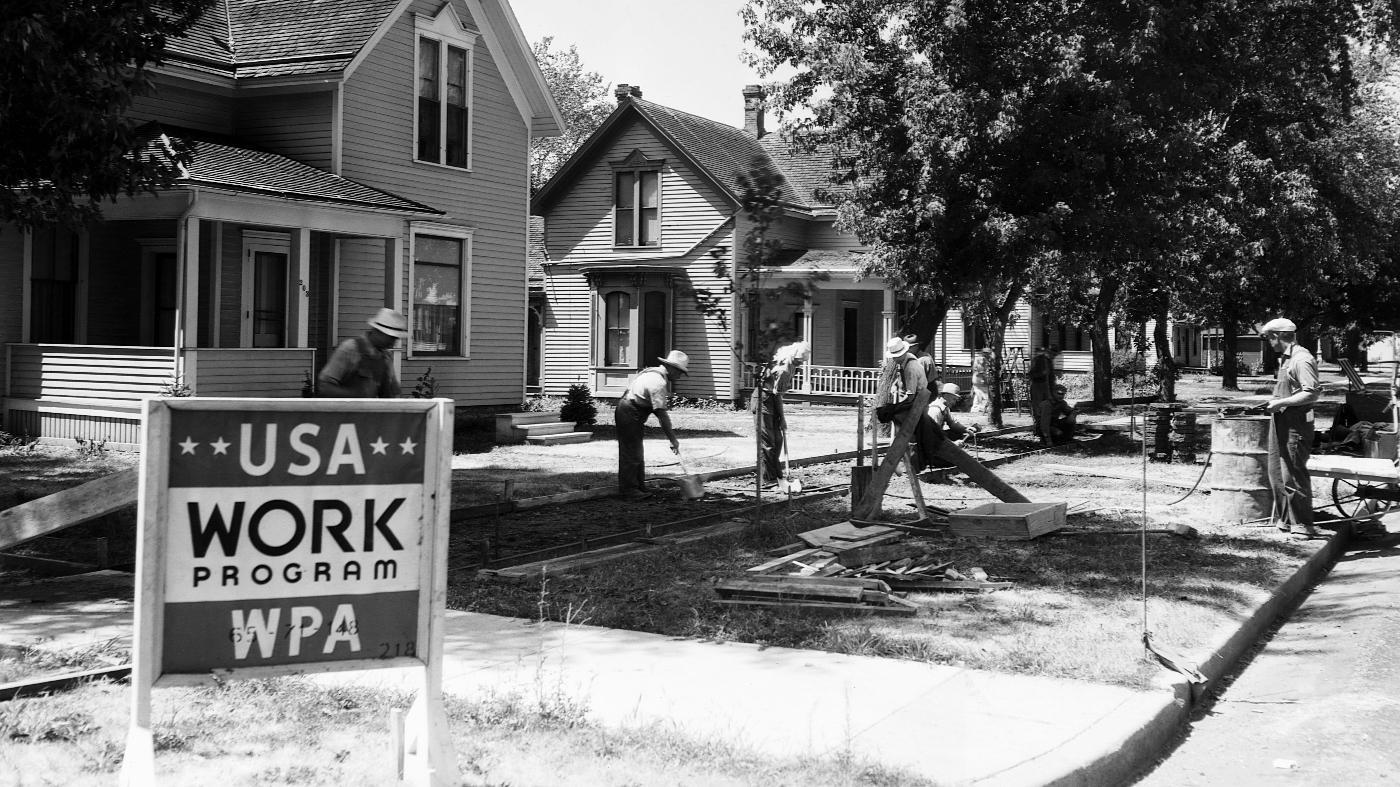
Source: CorbisImages
15. What was President Franklin D. Roosevelt’s plan to save the country from the Great Depression called?
- A) The End of the Depression
- B) Hope for America
- C) The New Deal
- D) The Final Straw
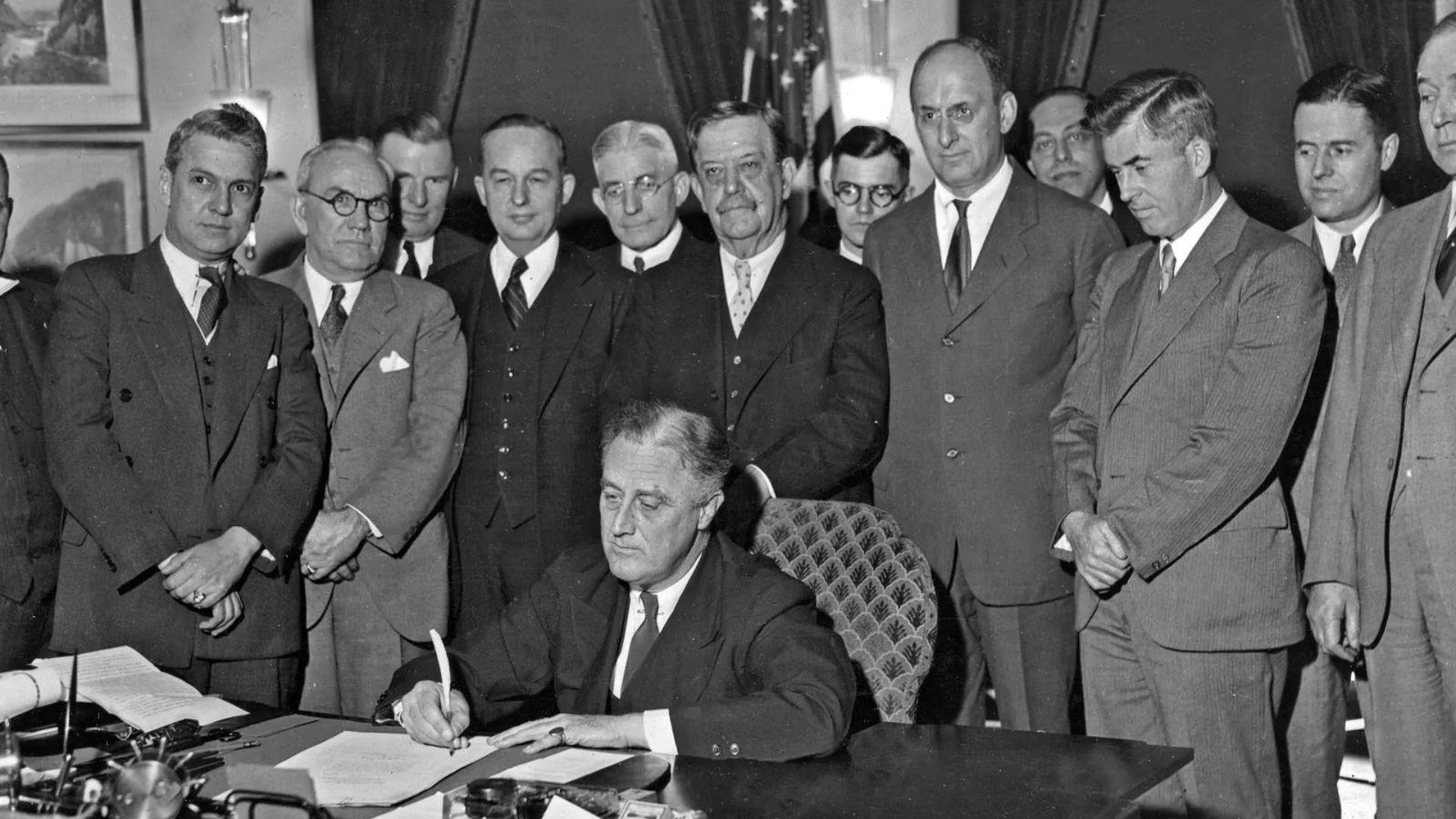
Source: Britannica
Answer:
The New Deal
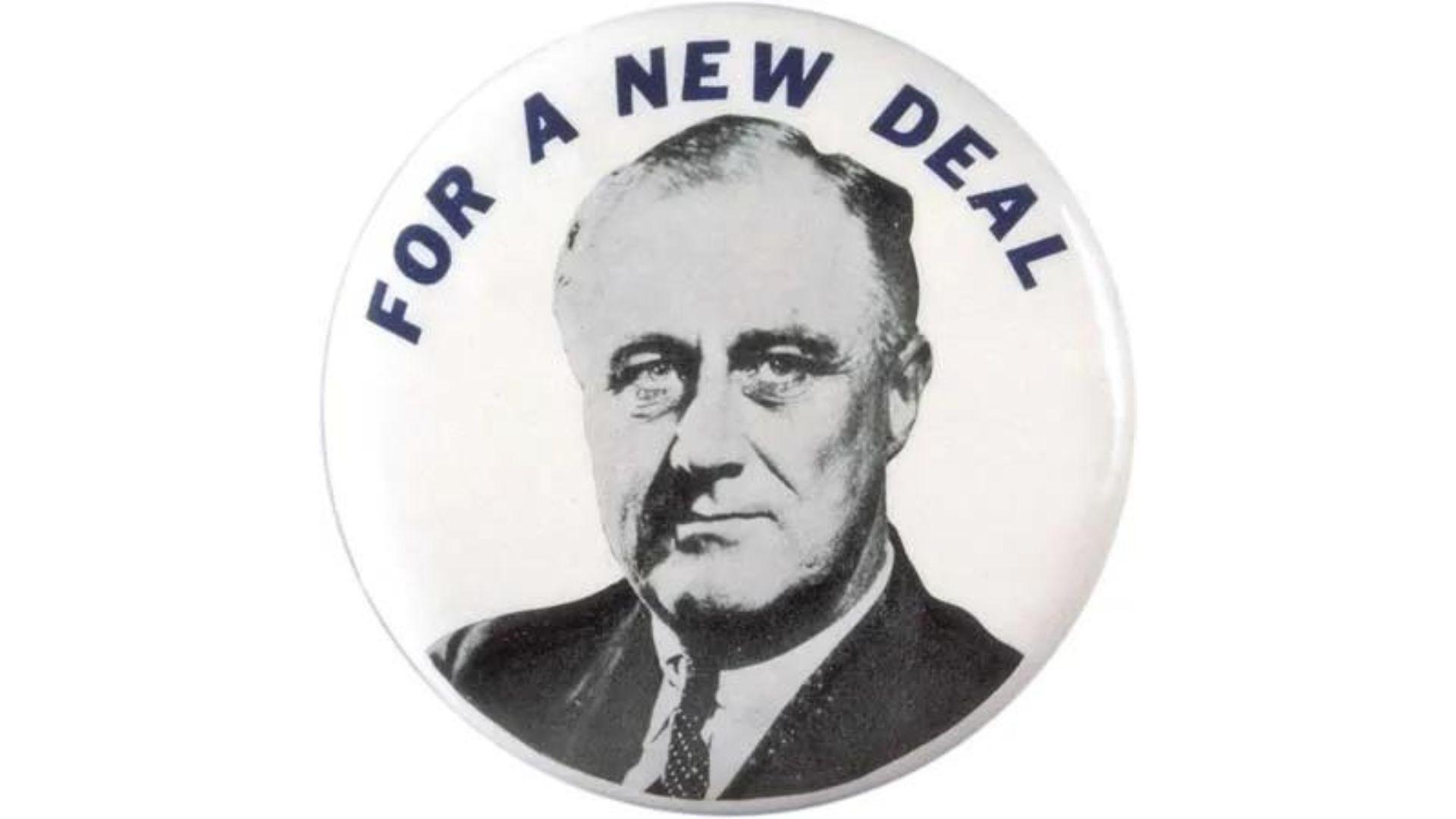
Source: Britannica
